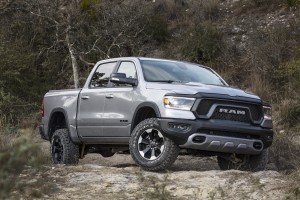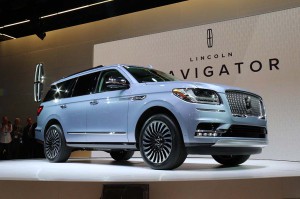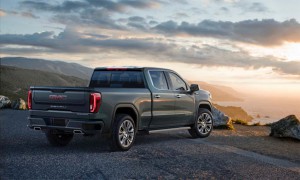
Fiat Chrysler outsold rival Ford Motor Co. in September, led by strong sales of its Ram pickup truck.
In a dramatic reversal of fortune, Fiat Chrysler Automobiles outsold Ford Motor Co. during the month of September and moved with striking distance of Toyota, the leading Japanese automaker.
FCA US reported U.S. sales of 199,819 vehicles, a 15% increase compared with sales in September 2017 of 174,266 vehicles.
Meanwhile, Ford Motor’s September U.S. sales declined 11.2% on total sales of 197,404 units. Sales by Toyota Motor North America declined by more 10% with on sales of 203,095 Toyota and Lexus units.
Volkswagen of America Inc. today reported sales of 30,555 units delivered in September 2018, a decrease of 4.8% compared with September 2017. With 266,228 units year-to-date in 2018, sales have now risen 5.5% this year to date.
(New vehicle sales expected to hit 17M-unit pace in September. Click Here for the story.)
VWOA’s September sales were impacted by delays in the certification process caused by a backlog in meeting new Worldwide Harmonized Light Vehicle Test Procedure standards. Certification delays pushed back the arrival of some model year 2019 vehicles, limiting inventory for the month, VW said.
American Honda reported an 8.2% sales drop in September, despite strong gains in truck sales and a 4% increase by the Acura brand. However, the star of September was Fiat Chrysler.
FCA US total sales and retail sales both posted their best September results in 18 years. The total sales record was in 2000 when sales reached 219,966 vehicles. Retail sales of 149,713 vehicles were the highest level since 2000 when retail sales hit 189,794. Sales were driven by Ram pickup trucks, Jeep Cherokee and Jeep Compass. Fleet accounted for 25% of total sales.
“Our Ram and Jeep brands propelled both our retail and total sales to their highest levels in 18 years,” said Reid Bigland, head of U.S. Sales.
For the industry, September presented a tough scenario for comparison due to the strong performance a year ago resulting from pent-up and replacement demand following Hurricane Harvey in Houston, while September 2018 experienced some weather-related impact due to Hurricane Florence, Ford officials noted.
Ford’s overall average transaction pricing increased $1,500 for September, expanding more than twice the rate of the overall industry average.
“F-Series posted its seventh straight month of sales above the 70,000-truck mark in September. As part of that run, F-Series has exceeded sales of 80,000 trucks three times this year. Ford SUVs are running at a record pace this year. The Expedition turned in a strong 27% gain. Lincoln’s Navigator posted a 77% gain, with 88% of Navigators sold as high trim series Black Label and Reserve models,” according to Mark LaNeve, Ford vice president.
General Motors Co. dealers delivered 694,638 vehicles in the third quarter of 2018 in the United States, with average transaction prices (ATPs) rising about $700 per unit year over year to a new third quarter record of $35,974.
(Click Here for details about FCA CEO Manley’s changes of executive responsibilities.)
The driving forces behind GM’s record ATPs – which are $4,000 above the industry average – include strong sales of trucks, SUVs and crossovers, and sharply lower incentive spending.
General Motors quarterly sales declined 11% year over year, with the impact of hurricanes sharply increasing industry and GM sales a year ago and depressing them somewhat this year. The third quarter light vehicle SAAR was 17.2 million units in 2017 and 16.9 million in 2018.
GM no longer publishes monthly sales totals.
“The U.S. economy and auto industry remain strong,” added GM Chief Economist Elaine Buckberg. “A new United States-Mexico-Canada trade agreement will reduce uncertainty for the auto industry and all three countries.
“Consumer confidence is high and rising, thanks to the robust job market, faster wage growth and the boost to take-home pay from tax reform. We believe 2018 will be the fourth year in a row with total industry sales above 17 million units.”
During the third quarter, GM’s incentive spending was below the industry average and 2 – 6 percentage points below domestic and many Asian competitors.
“We entered the quarter with very lean inventories of our 2018 model full-size pickups, so we focused on driving a very strong mix of SUVs, crossovers and mid-size pickups,” said Kurt McNeil, U.S. vice president of Sales Operations. “We also transitioned to the 2019 model year far earlier than some key competitors, which allowed us to reduce incentives while others raised them sharply,” McNeil said.
Key new product launches are all on track: Dealers began receiving their first shipments of light duty 2019 Chevrolet Silverados and GMC Sierras in September. During the month, Cadillac dealers also began delivering the first-ever XT4 compact crossover. Late in the fourth quarter, Chevrolet will begin production of the all-new Blazer crossover.
Analysts for Edmunds noted that rising interest rates continued to put pressure on new vehicle sales in September, according to the car shopping experts at Edmunds.
(To see more about the new agreement replacing NAFTA, Click Here.)
The annual percentage rate on new financed vehicles averaged 5.8% in September, compared to an average APR of 4.8% in September 2017 and 4.1% five years ago. Interest rates have stayed above 5% for eight months in a row, mirroring APRs that the industry witnessed prior to the recession.


